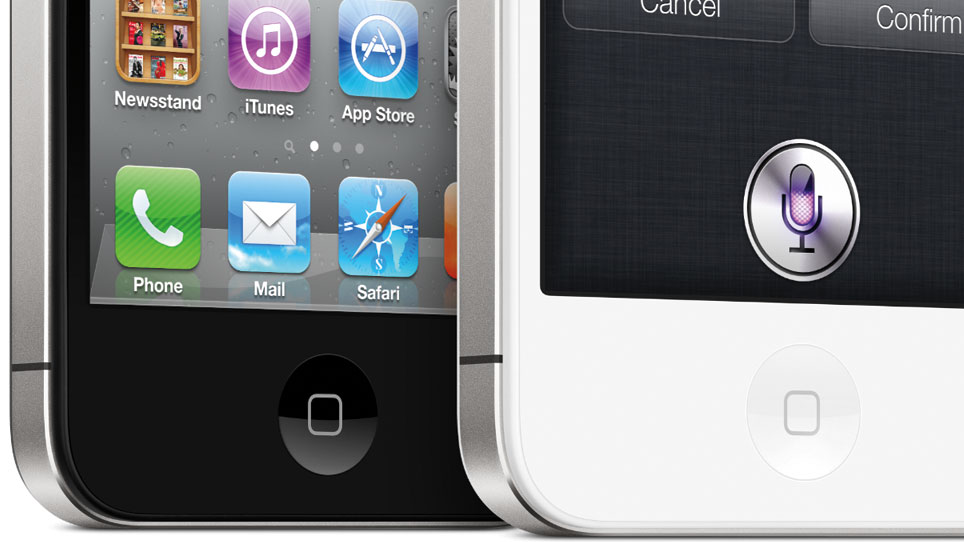Why you can trust TechRadar
When Apple announced the new Siri software for the iPhone 4S, it was easy to just dismiss it as another company trying to get on board with the voice recognition gimmick we've seen companies trying to make work for years.
But there are a couple of things to remember here: firstly, this is Apple, a brand that will always make something seem cool and work pretty well. And secondly, it's not a technology that it's had to develop fully in house, with the company buying voice recognition development app-maker Siri.
We've played with some pretty advanced voice recognition software on the likes of the Samsung Galaxy S2, so we've also taken a look to see how the same command is registered on both phones.
Long pressing the home button will result in the Siri voic icon popping up - or alternatively, you can set the iPhone 4S to activate the service when you hold the phone up to your ear in standby mode, so you don't look as ridiculous when talking to your handset.
From there, you've got quite a range of things you can achieve with speech alone, be it sending a message, playing a song (or even a playlist), setting the alarm, creating a reminder... we were very impressed with the range of options on offer.
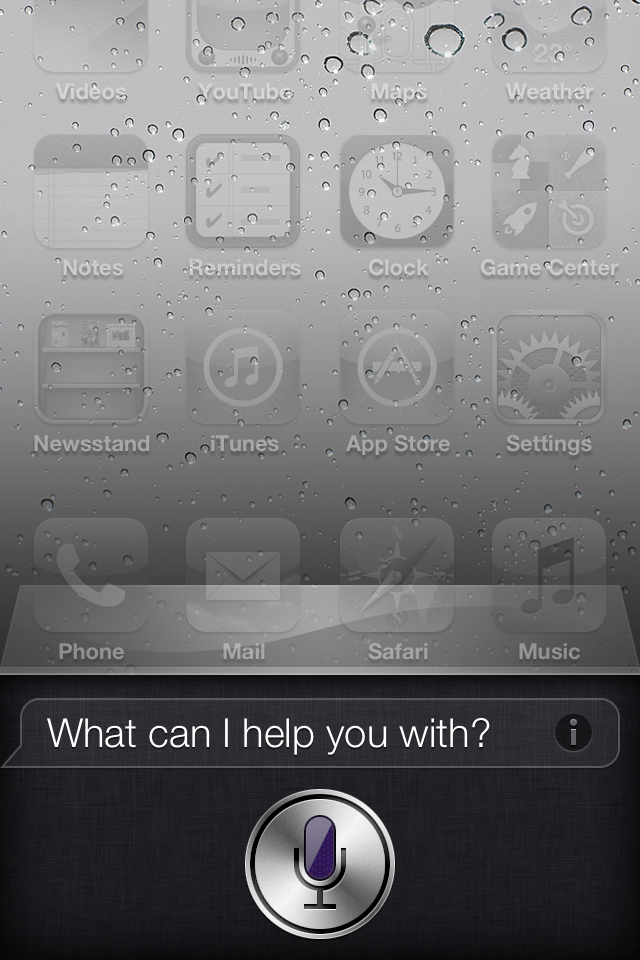
And the system is quick too - where with many other phones you have to open up the voice recognition function (often in a long winded way) and then wait for the beep to speak, Siri opens up in around a couple of seconds from anywhere in the phone.
The voice recognition is pretty darn good too - we were straight away impressed with how many phrases it managed to get right on the first go, including some pretty obscure bits and pieces of speech. You do have to pronounce your words a little more clinically than you might do normally, but even garbled speech comes through pretty well.
To put a number on it: we went through the list of functions Siri offers, and found that around one in three or four attempts went awry, which is miles better than the one in two we encounter on most other phones.
However, before we get into the comparison, we should say this about Siri in the UK - the full range of services aren't available, and that's a real shame. This means you can't ask where the nearest McDonald's or petrol station is, a feature that's been talked up in the US.
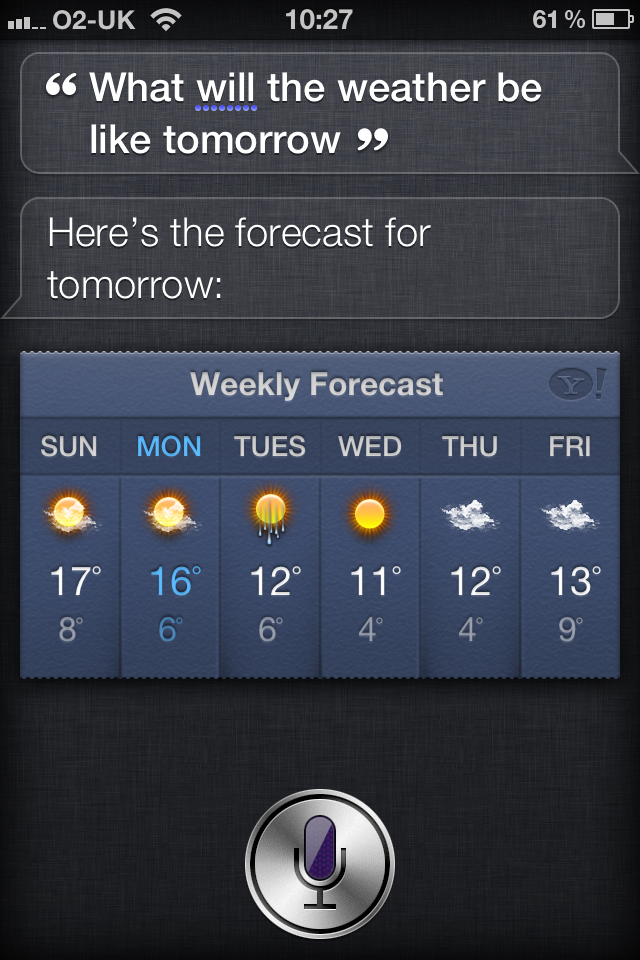
We do have high hopes that the same features will eventually be enabled in the UK, as it's just a matter of licensing the information and incorporating it into the system, but it will be annoying for a number of users to see that Siri comes back with 'I cannot do that' time and time again for cool functionality.
But what it does do well is work out the context of what you're saying, something that most other voice recognition software fails to do. So if you say 'Tell Andy his hair looks amazing today' it will work out that you'll want to tell him by message, rather than asking what method you'd prefer to speak to him.
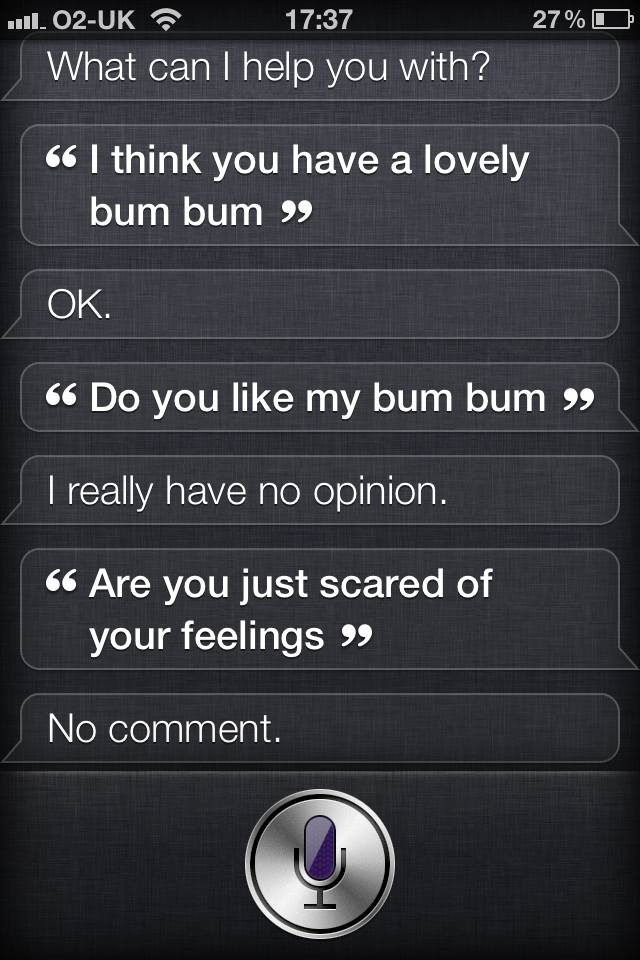
Messaging isn't as straightforward as we'd like though, as using the 'Send message' command to a person in your address book will result in you being asked whether you'd like to do it using the phone number or email address - and there's no way to set a personalised choice.
Let's compare the iPhone 4S to the Samsung Galaxy S2 to see which phone comes out top in the voice recognition stakes:
Firstly, the iPhone 4S has a range of functionality that the S2 simply doesn't have - things like being able to set the alarm and play a specific song or playlist aren't available on the Samsung option, which is rather annoying.
We asked both phones: what's the weather like tomorrow?
The iPhone 4S managed to nail that in a few seconds, whereas the Galaxy S2 couldn't read the 'tomorrow' part of the command, meaning we had to ask 'What's the weather like?' which simply showed us an (admittedly very useful) Google search to give the information.
We asked both phones to set a reminder to 'Buy apples tomorrow at 11.35am'. The iPhone 4S simply made a reminder that said 'By Apple' but at the correct time, although sadly the S2 couldn't register a time stamp in the message and decided we wanted to 'Buy Apple store'.
The final test went better for both handsets: Asking both to send a message to Rich Fields, it managed to get what we said with ease and then managed to send it with a quick voice command.
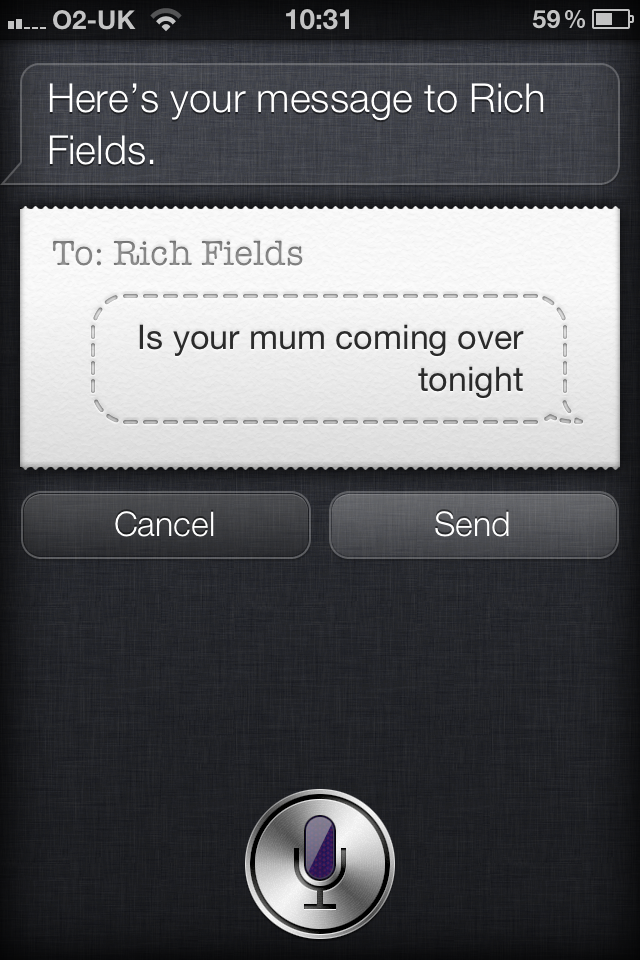
As you can see, the iPhone clearly has the edge when it comes to voice recognition, but it's still not perfect. Especially as we noted that on more than one occasion it failed despite being connected to a Wi-Fi router, stating it could not connect to the network.
We are being pretty picky here, as Siri is by far the best voice recognition software on the market for a mobile phone, so it's a big 'Bravo!' to Apple for leading the way with this technology.
However, while it's cool and fun to play with as a new feature on your phone at the moment, the key to whether Siri will be a game changing piece of technology depends on other applications being able to use the API and integrate the functionality into their own offerings - something Apple currently doesn't offer but we hope it will soon.
Apple also has to improve the service to gain more scope and include more functions, but for now it's a very good start and the future for the tech can only get brighter in our eyes - it seems this won't be another FaceTime after all.

Gareth has been part of the consumer technology world in a career spanning three decades. He started life as a staff writer on the fledgling TechRadar, and has grew with the site (primarily as phones, tablets and wearables editor) until becoming Global Editor in Chief in 2018. Gareth has written over 4,000 articles for TechRadar, has contributed expert insight to a number of other publications, chaired panels on zeitgeist technologies, presented at the Gadget Show Live as well as representing the brand on TV and radio for multiple channels including Sky, BBC, ITV and Al-Jazeera. Passionate about fitness, he can bore anyone rigid about stress management, sleep tracking, heart rate variance as well as bemoaning something about the latest iPhone, Galaxy or OLED TV.
